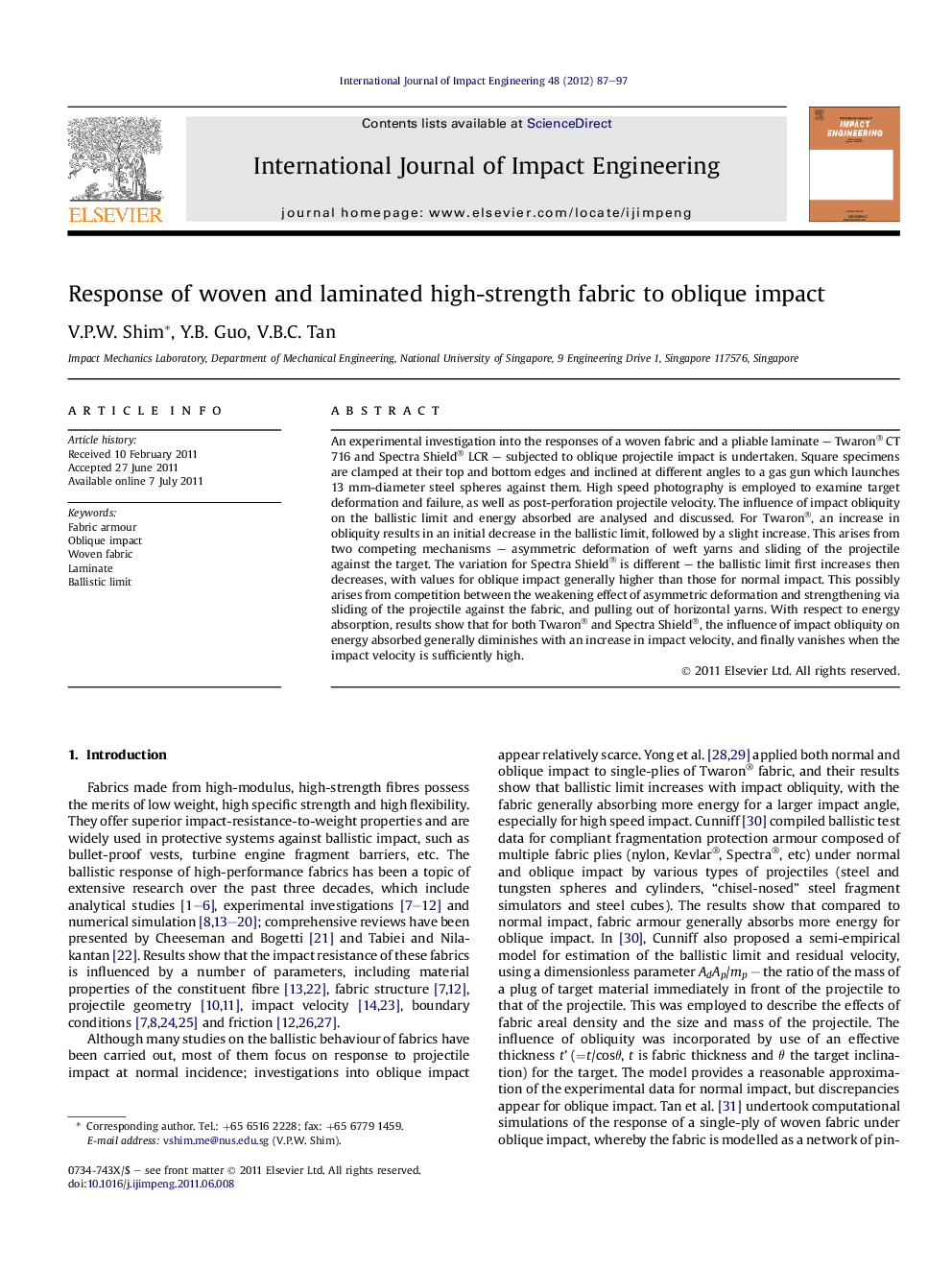| Article ID | Journal | Published Year | Pages | File Type |
|---|---|---|---|---|
| 783104 | International Journal of Impact Engineering | 2012 | 11 Pages |
An experimental investigation into the responses of a woven fabric and a pliable laminate – Twaron® CT 716 and Spectra Shield® LCR – subjected to oblique projectile impact is undertaken. Square specimens are clamped at their top and bottom edges and inclined at different angles to a gas gun which launches 13 mm-diameter steel spheres against them. High speed photography is employed to examine target deformation and failure, as well as post-perforation projectile velocity. The influence of impact obliquity on the ballistic limit and energy absorbed are analysed and discussed. For Twaron®, an increase in obliquity results in an initial decrease in the ballistic limit, followed by a slight increase. This arises from two competing mechanisms – asymmetric deformation of weft yarns and sliding of the projectile against the target. The variation for Spectra Shield® is different – the ballistic limit first increases then decreases, with values for oblique impact generally higher than those for normal impact. This possibly arises from competition between the weakening effect of asymmetric deformation and strengthening via sliding of the projectile against the fabric, and pulling out of horizontal yarns. With respect to energy absorption, results show that for both Twaron® and Spectra Shield®, the influence of impact obliquity on energy absorbed generally diminishes with an increase in impact velocity, and finally vanishes when the impact velocity is sufficiently high.
